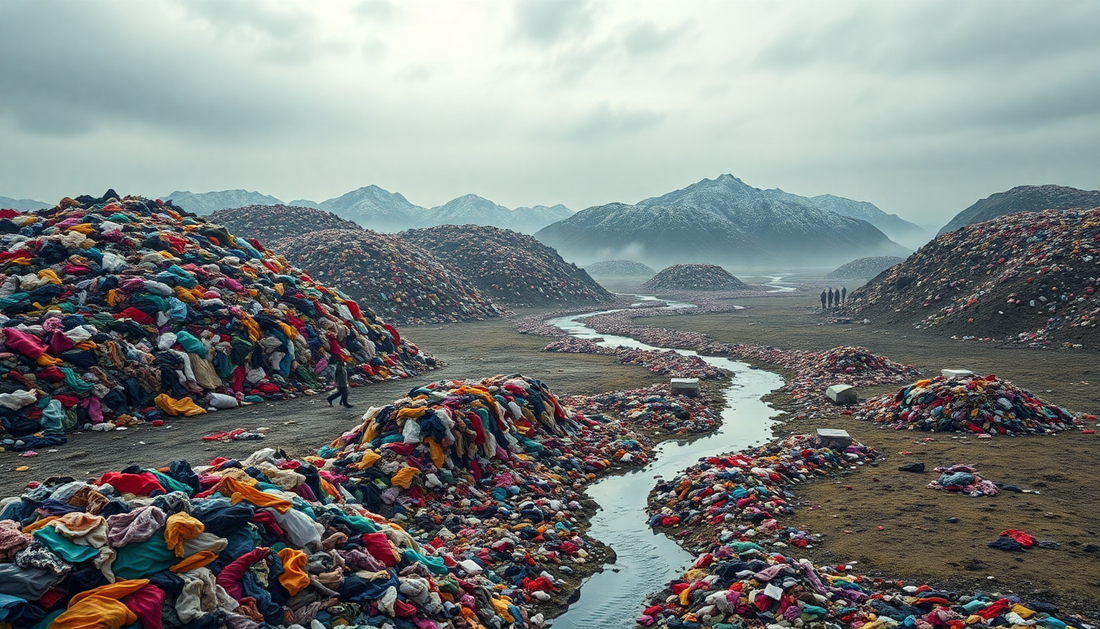The fashion industry has undergone a dramatic transformation in recent decades, with the rise of "fast fashion" - a business model that prioritizes speed, affordability, and constant newness over sustainability and quality. While this shift has made fashion more accessible to the masses, it has come at a significant cost to the environment.
The Rise of Fast Fashion
Fast fashion, characterized by its rapid production cycles, low prices, and high turnover, has become the dominant force in the global apparel industry. Driven by the desire for constant novelty and the pressure to keep up with ever-changing trends, consumers have embraced this model, fueling a relentless demand for new clothing. Retailers, in turn, have responded by accelerating their production timelines, often delivering new collections on a weekly or even daily basis.
The Environmental Impact of Fast Fashion
The environmental consequences of this fast-paced industry are staggering. From the extraction of raw materials to the disposal of discarded garments, the fashion supply chain leaves a significant ecological footprint.
Textile Waste
One of the most pressing issues is the sheer volume of textile waste generated by the fast fashion industry. As clothing becomes increasingly disposable, millions of tons of textiles end up in landfills or are incinerated each year, contributing to the growing global waste crisis.
Water Pollution
The production of textiles, particularly the dyeing and finishing processes, is a major contributor to water pollution. Hazardous chemicals and dyes used in the manufacturing process often end up in waterways, contaminating the surrounding ecosystems and posing a threat to both human and animal health.
Carbon Emissions
The fashion industry is a significant contributor to global greenhouse gas emissions, with the production, transportation, and disposal of clothing all contributing to the carbon footprint. The energy-intensive nature of textile manufacturing, coupled with the reliance on fossil fuels, has made the industry a major player in the climate change equation.
Resource Depletion
The fast fashion model is also a major driver of resource depletion. The production of clothing requires vast amounts of water, energy, and raw materials, such as cotton, polyester, and leather. As the demand for new clothing continues to rise, the strain on these finite resources becomes increasingly unsustainable.
The Global Consequences
The environmental impact of fast fashion extends far beyond the borders of the countries where the clothing is produced. Developing nations, often the sites of garment manufacturing, face a disproportionate burden in terms of pollution, resource depletion, and the social and economic challenges that come with this industry.
Towards a Sustainable Future
Addressing the environmental challenges posed by fast fashion will require a multifaceted approach, involving both industry-wide reforms and individual consumer actions.
The Slow Fashion Movement
The slow fashion movement, which emphasizes quality, durability, and ethical production, offers a promising alternative to the fast fashion model. By encouraging consumers to invest in fewer, higher-quality garments and to extend the lifespan of their clothing, this approach can help reduce waste and minimize the industry's environmental footprint.
Eco-Friendly Brands
Alongside the slow fashion movement, a growing number of eco-friendly clothing brands are emerging, offering sustainable alternatives to traditional fast fashion. These brands prioritize the use of organic, recycled, or upcycled materials, as well as ethical manufacturing practices, to reduce their environmental impact.
Consumer Responsibility
Ultimately, the responsibility for creating a more sustainable fashion industry lies not only with the industry itself but also with the consumers who drive the demand. By making conscious purchasing decisions, extending the life of their clothing, and supporting sustainable brands, consumers can play a crucial role in driving the shift towards a more environmentally-friendly fashion future.
Conclusion
The environmental toll of fast fashion is undeniable, and the time for action is now. By embracing sustainable alternatives, supporting ethical brands, and making conscious consumer choices, we can work towards a future where fashion and the environment can coexist in harmony. The path to a greener, more sustainable fashion industry may be long, but the benefits to our planet and future generations are immeasurable.

